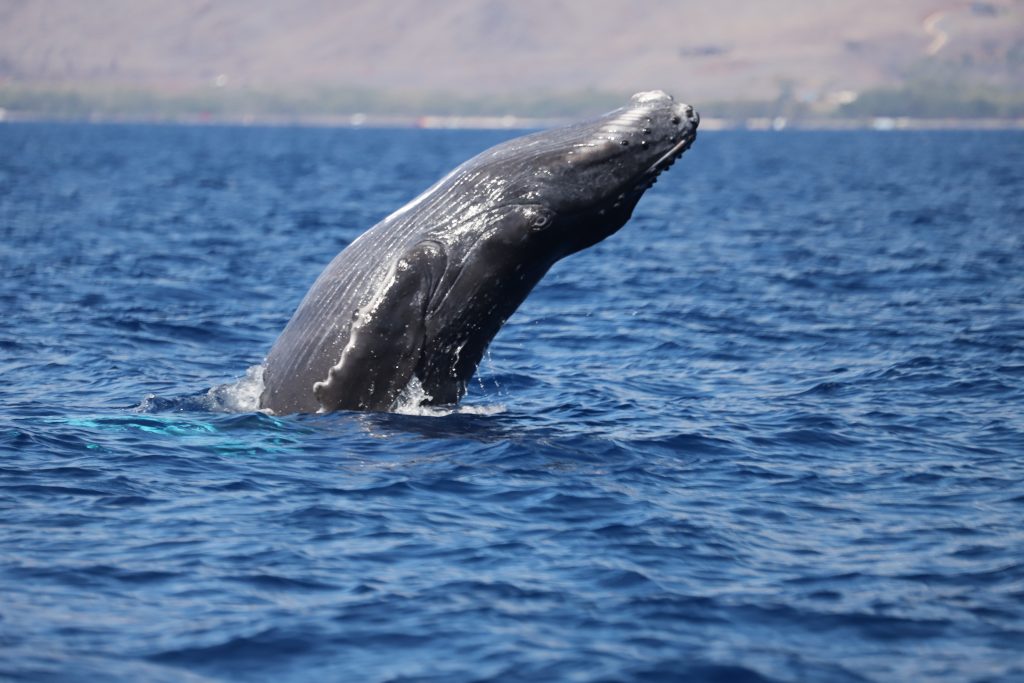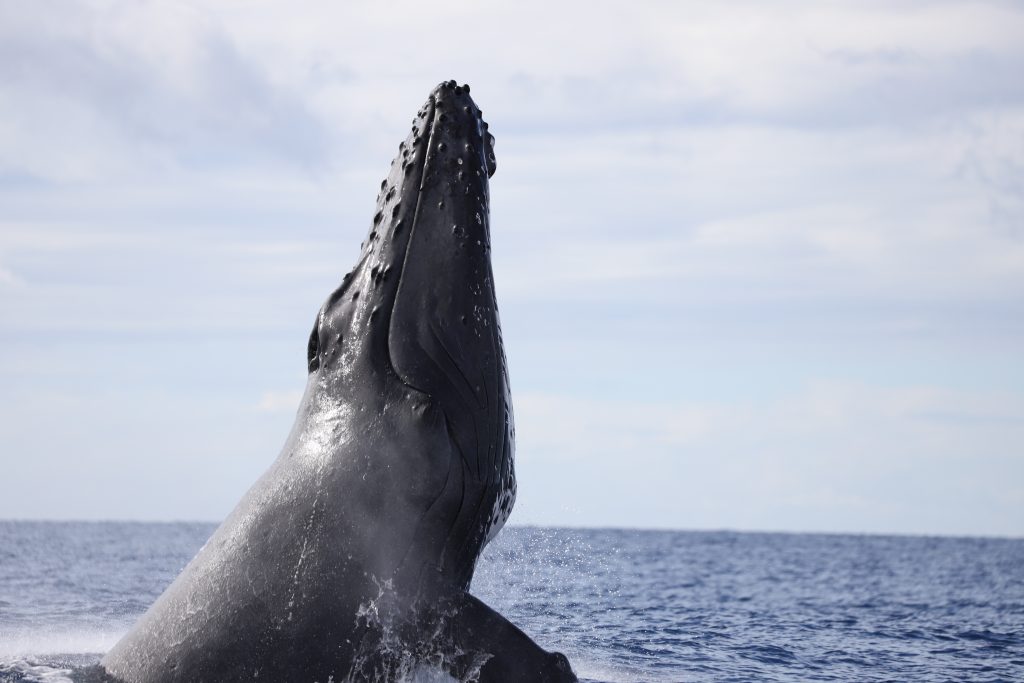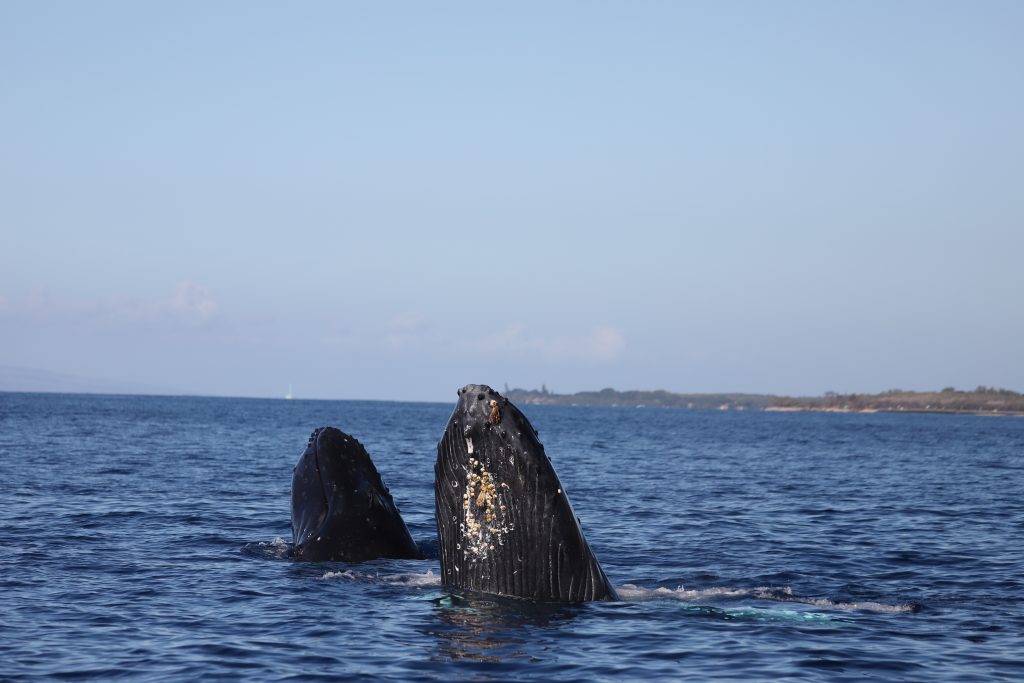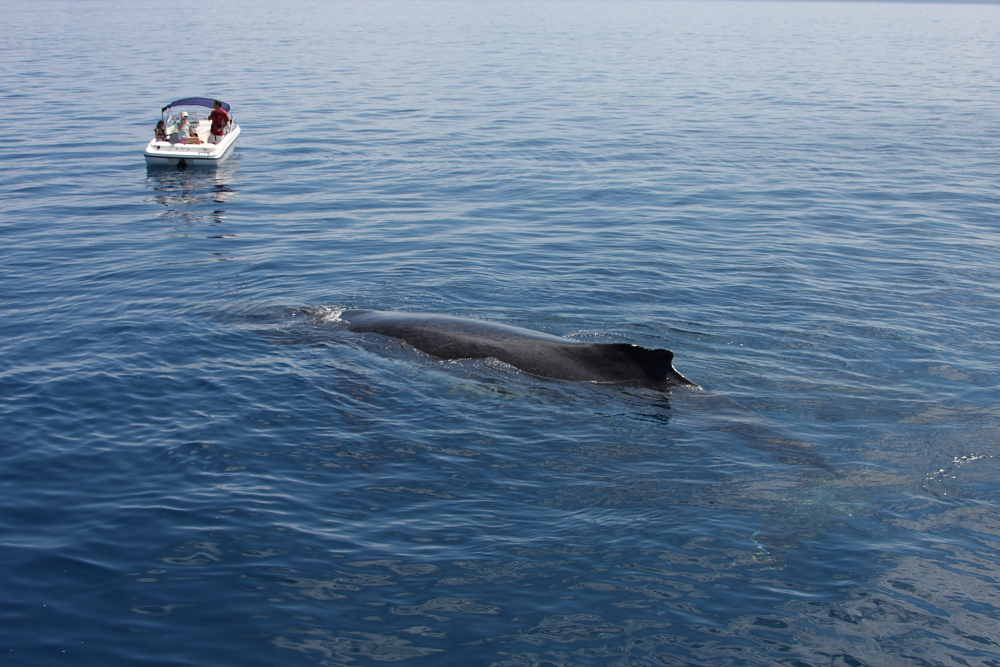Slow down! Whales are in town: New boat speed recommendations around humpbacks
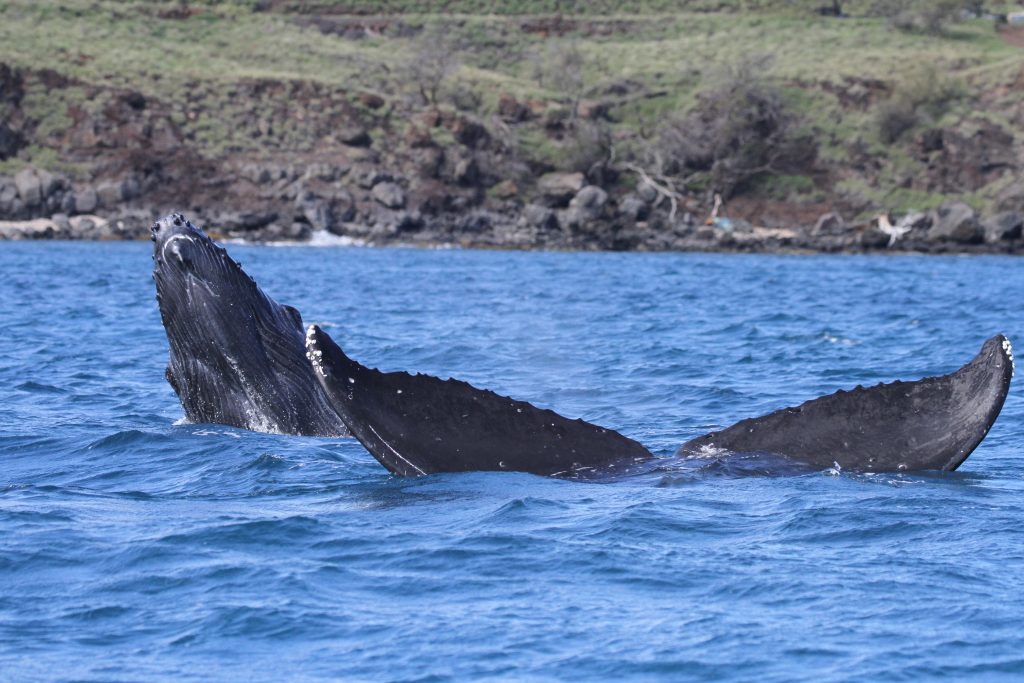
Reduce speed to 15 knots while in transit;
Six knots within 400 yards of whales
New voluntary boat speed recommendations were announced today for mariners operating vessels around humpbacks in Hawaiian waters.
Boaters are being asked to reduce transit speeds to 15 knots or less, and slow to six knots when within 400 yards of humpbacks, when approaching and departing the area.
“We’ve been saying for years now, how important slower and more prudent speeds are. The available data suggests that transit speed, when around whales, should be 15 knots or less,” said Ed Lyman, Natural Resource Specialist with the Hawaiian Islands Humpback Whale National Marine Sanctuary.
Lyman, coincidentally, was responding to a whale entanglement report off Maui waters today, and was unable to attend a press briefing that announced the new voluntary speed recommendations.
The recommendation is based years of collaboration since 2013 between representatives from Pacific Whale Foundation, NOAA, the DLNR Division of Boating and Ocean Recreation, the DLNR Division of Aquatic Resources, tour operators like PacWhale Eco-Adventures, private boaters, fishers, and other community members.
“In a nutshell, we found a significant drop in the distance between the encounters when you traveled at higher rates of speed, and that significant piece being of course 15 knots,” said Jens Currie, Chief Scientist with the Pacific Whale Foundation during a press briefing hosted Monday afternoon by the state Department of Land and Natural Resources. “So the voluntary recommendation or best practice for speed that youʻll see in here throughout this campaign really came from that, and the ability for the vessel operator to have more time to react when they see a whale in close proximity, but also to reduce some of the severity that could happen if you did have a collision.”
According to Currie, humpback whales reacted to approaching vessels with, “increased swim speed and decreased dive times, and a straighter line of travel, all occurring when the vessels were within 400 yards–so well beyond the 100 yard approach limit,” currently in place.
Other key recommendations resulting from the collaboration include:
- Reduce vessel speed to six knots when within 400 yards when approaching and departing whales.
- Posting a lookout
- Paying close attention to time of day and time of year
Mitigating engine noise as a disturbance for whales
“The reason we land on that six knot piece is drawing on additional research done not just here in Hawaiʻi but elsewhere, that showed the majority of vessel types will have an engine noise equivalent to the ambient ocean nois e if you travel at six knots or less,” said Currie.
“The disturbance or evasive maneuvers we observed were likely in response to vessel noise as opposed to a visual cue because they’re well beyond 100 yards–even up to 400 yards. So that slow down on the approach and departure piece really draws on two pieces of research: (1) there’s reactions at 400 yards out; and (2) you can negate the acoustic impact of your vessel by traveling at six knots or less upon your approach,” said Currie.
The new recommendation comes ahead of Whale Week, which is observed Feb. 14-20, with World Whale Day celebrated on Sunday, Feb. 20.
Jeannine Rossa, with the DLNR Division of Aquatics, who serves as the state co-manager of the Hawaiian Islands Humpback Whale National Marine Sanctuary, DLNR Division of Aquatic Resources said, the guidelines have been around for a long time, but calls the latest recommendations a refinement of existing guidelines.
“There’s one regulation that is enforceable, that’s [to] stay 100 yards away from a whale,” said Rossa. “The others are all guidelines… But that’s why we’re making a bigger effort to get it out to the community everywhere.”
Recommendations apply to all on-water craft
The new guidelines apply to all types of vessels and any on-water craft. “You’re certainly not going to have SUP boards reaching that 15 knot speed limit, but they can certainly do things on the way they approach,” said Currie, noting that additional guidelines will be released to address other potential whale interactions including: don’t go in front of a whale, and approach from the side.
Currie noted that whale strikes occur each year, saying, “There hasn’t been a year when we haven’t had a vessel strike; and they do tend to occur more in the calf and juvenile side, as they are more susceptible. When we think about that, it makes sense because calfs spend much more time up at the surface in the risk zone where they can come in contact with a vessel, compared to other groups which can dive longer and don’t have to be up at the surface quite as much.”
The guidelines are aimed at protecting whales from both vessel strikes and harassment. “The more important piece, in my opinion, is the harassment piece, and that’s much more prominent. We looked at, under the current regulations: Are whales reacting to vessels if they follow just the 100 yard approach? We tracked over 400 vessels, I think over 700 whales and we saw that whales were reacting, and so that’s a disturbance behavior.”
“You have to keep in mind that whales are here and they’re not feeding. So they have a finite amount of energy before they have to migrate back to Alaska to that food source. So any extra energy that’s expended as a result of a vessel approach, or an evasive maneuver, is energy lost that can’t be used to contribute to important life history steps such as breeding and of course calving and nursing for those mom-and-calf groups. That’s equally important to consider with these recommendations,” said Currie.
New recommendation is a guideline, not policy
Currie noted that the new recommendations are guidelines, and are not going to policy. “A nice summation is–we don’t need it. We found that when talking to the boating community that they all want to do the right thing, but they want to make sure that it makes sense. That’s really the approach here is to ensure we have a science to guide it, and then provide the information to the community. They want to do the right thing, and we don’t have to go through the route of policy,” he said.
Wintering whale population has highest density in Maui Nui
There are anywhere between 10,000 to 15,000 whales that arrive in Hawaiian waters annually in a trickle migration. “They’re not all arriving at once… we have a subset of that transiting from Alaska and back again throughout the entire whale season, and we do know the highest densities occur in the Maui Nui region, as well as Penguin Bank, from some aerial surveys done in the 90s,” said Currie.
Rossa offered a lower estimate saying the Sanctuary places the whale population at between 6,000 and 10,000, but “not more than 10,000.” She said an archipelago-wide survey would offer better population estimates.
She also explained the whale population drop in 2016-2017, saying scientists believe the contributor to that was the high water temperatures in the ocean affecting whale food sources.
“When there were fewer whales coming to Hawaiʻi, it doesn’t mean that the whales all died–all it means is that they weren’t coming to Hawaiʻi,” said Rosa. “They could go to Mexico instead; they could stay in Alaska; or they could die. There’s multiple reasons why they wouldn’t be coming here. But we did see population numbers going back up again, subsequently, and that’s not all reproduction (it doesn’t happen that quickly).”
“Everyone wants to avoid a whale strike, so these recommended speeds will help mariners too,” Lyman said, equating a fast-moving boat around whales to a speeding driver in a school zone. Just last year, the Hawaiian Islands Humpback Whale National Marine Sanctuary reported an abundance of mother/calf pairs observed in Hawaiʻi waters.
Humpback whale season in Hawai‘i generally runs from November through May, although whales may be encountered in limited numbers during other months.





